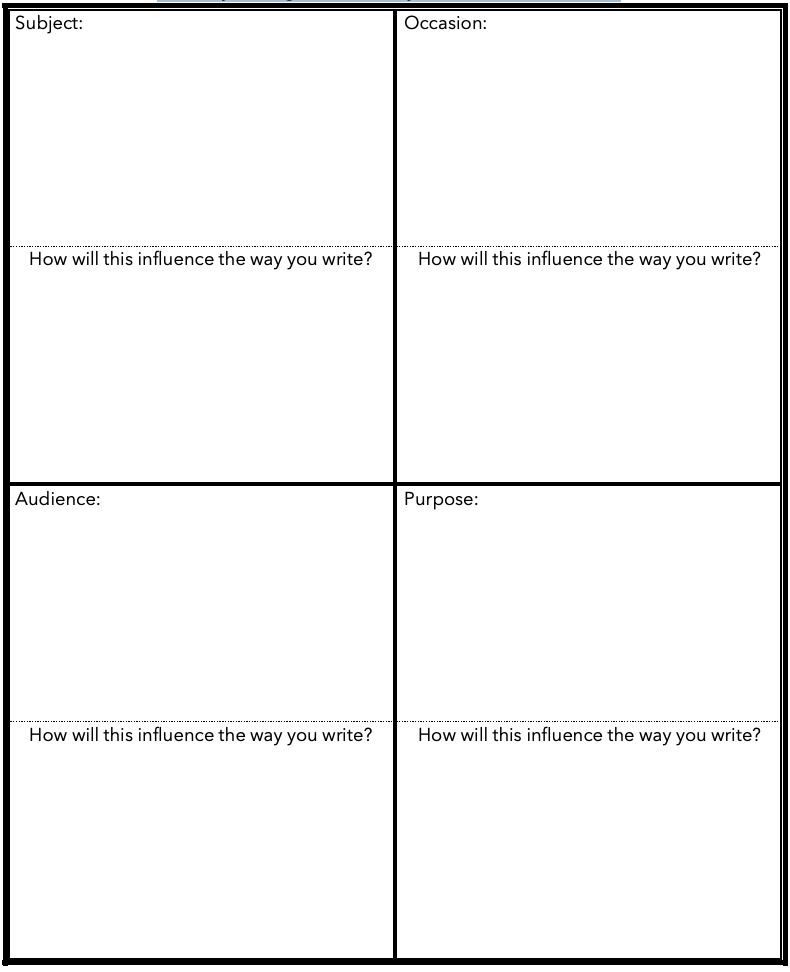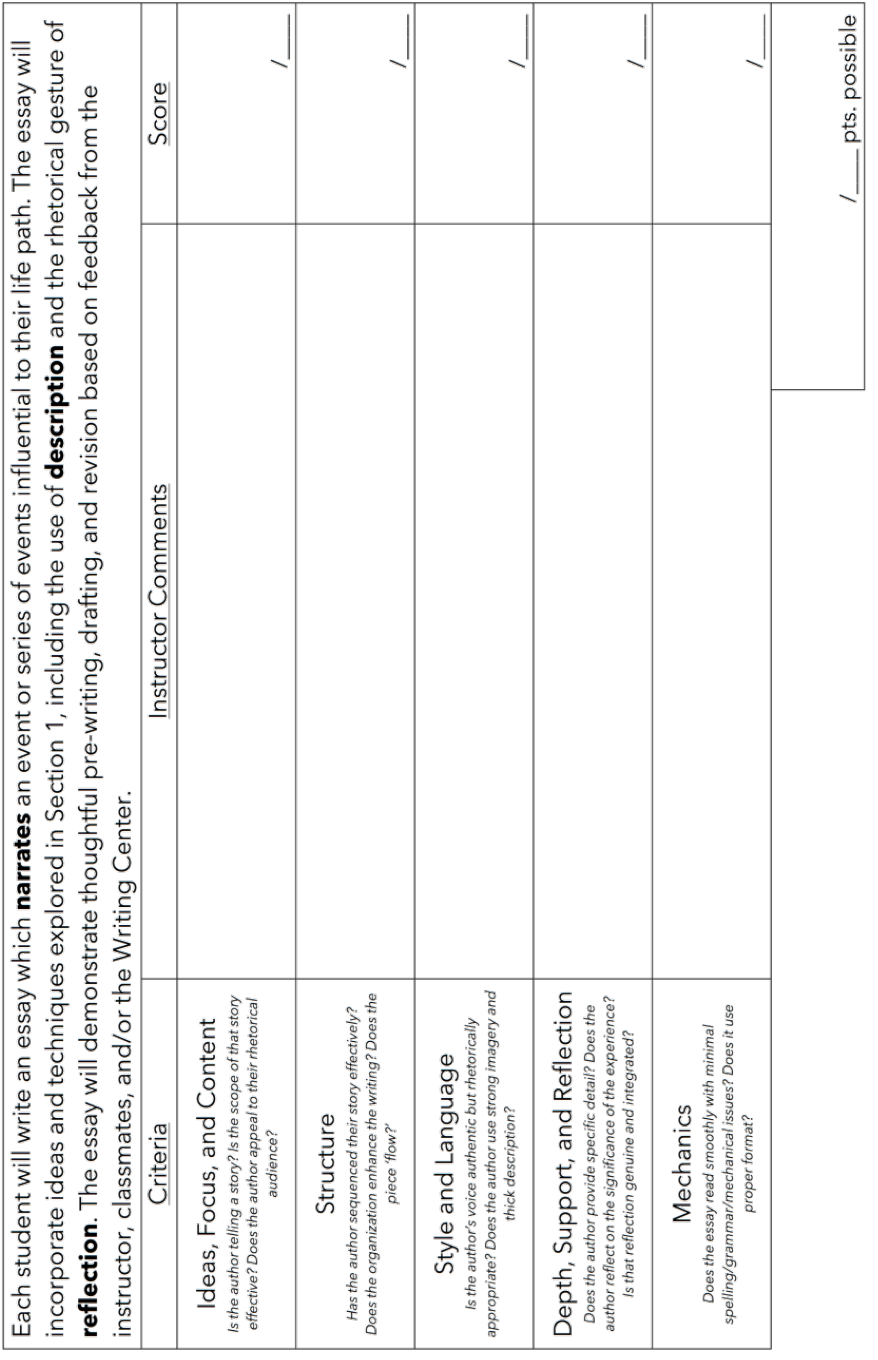1.4.1: Assignment- Descriptive Personal Narrative
- Page ID
- 70810
Assignment- Descriptive Personal Narrative
To synthesize what you’ve learned about description, narration, and reflection, you will write a personal narrative. This is generally a nonfiction, prose essay (similar to a memoir), but your instructor might provide additional guidelines in regard to genre, media, approach, or assessment standards.
Assignment
Your task is to identify an influential place, event, or person from your life experience about which you can tell a story. Then, you will write a narrative essay that relates that story and considers the impact it had on you, your worldview, and/or your life path. Using model texts in this book as exemplars, you will tell a story (narrate) using vivid description and draw out meaning and insight using reflection.
As you’ll evaluate below, descriptive personal narratives have a variety of purposes. One important one is to share a story that stands in for a bigger idea. Do not be worried if you don’t know the “bigger idea” yet, but be advised that your final draft will narrate a focused, specific moment that represents something about who you are, how you got here, what you believe, or what you strive to be.
Be sure to apply the concepts you learn in class to your writing.
Before you begin, consider your rhetorical situation:


Before beginning the Peer Workshop and revision process, I recommend consulting the Revision Concepts and Strategies Appendix. In your Peer Workshop group (or based on your teacher’s directions), establish a process for workshopping that will work for you. You may find the flowchart titled “Establishing Your Peer Workshop” useful.


One Example of a Peer Workshop Process
Before the workshop, each author should spend several minutes generating requests for support (#1 below). Identify specific elements you need help on. Here are a few examples:
I need suggestions for new imagery.
Do you think my reflective writing seems too “tacked on.”
Do you have any ideas for a title?
I need help proofreading and polishing.
During the workshop, follow this sequence:
1. Student A introduces their draft, distributes copies, and makes requests for feedback.
What do you want help with, specifically?
2. Student A reads their draft aloud while students B and C annotate/take notes.
What do you notice as the draft is read aloud?
3. Whole group discusses the draft; student A takes notes. Use these prompts as a reference to generate and frame your feedback. Try to identify specific places in your classmates’ essays where the writer is successful and where the writer needs support. Consider constructive, specific, and actionable feedback.
What is the author doing well? What could they do better?
- What requests does the author have for support? What feedback do you have on this issue, specifically?
- Identify one “golden line” from the essay under consideration—a phrase, sentence, or paragraph that resonates with you. What about this line is so striking?
- Consult either the rubric included above or an alternate rubric, if your instructor has provided one. Is the author on track to meet the expectations of the assignment? What does the author do well in each of the categories? What could they do better?
- Ideas, Content, and Focus
- Structure
- Style and Language
- Depth, Support, and Reflection
- Mechanics
- What resonances do you see between this draft and others from your group? Between this draft and the exemplars you’ve read?
4. Repeat with students B and C.
After the workshop, try implementing some of the feedback your group provided while they’re still nearby! For example, if Student B said your introduction needed more imagery, draft some new language and see if Student B likes the direction you’re moving in. As you are comfortable, exchange contact information with your group so you can to continue the discussion outside of class.

